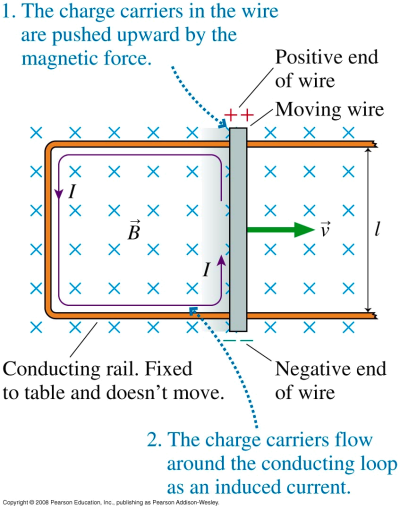Summary
- Biot-Savart law
- Gauss's law for magnetism
- Ampere's law
- Written Quiz Chs. 28-29
Chapter 30
- Motional emf
- Magnetic flux
- Prepare:
Read textbook section 30-3 before the next lecture
Walker4 23.37
The Boeing KC-135R Stratotanker has a wingspan of 39.9 m and flies through Earth's magnetic field at
a location where the vertical component is 4.70×10−5 T. If the plane cruises
at 237 m/s in level flight, what emf will appear between its wingtips?

A. 535 V
B. 1.87 mV
C. 3.36 V
D. 0.444 V
Answer
POP5 23.15a
A 1.2 m frictionless bar slides in a 2.50-T magnetic field as shown. If R = 6.0 Ω,
what force is needed to keep the bar sliding at 2.0 m/s?
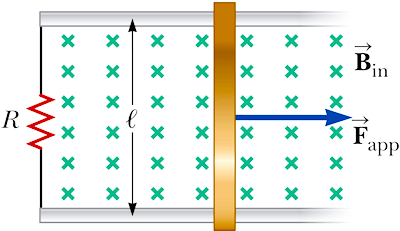
A. 3.00 N
B. 1.00 N
C. 0.500 N
D. 0.025 N
Answer
POP5 23.15b
At what rate is energy delivered to the resistor?

A. 1.00 W
B. 3.00 W
C. 6.00 W
D. 10.0 W
Answer
PSE6 31.31
Two parallel rails with negligible resistance are 10.0 cm apart. As the rods in the figure below are
pulled away at the rates shown in a 0.0100 T magnetic field, what is
the current through the 5.00-Ω resistor?
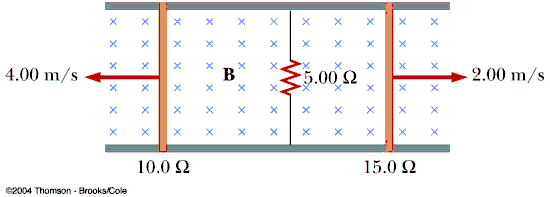
A. 145 µA
B. 22.5 mA
C. 855 mA
D. 1.75 A
Answer
POP5 22.73
The figure shows an electromagnetic blood flowmeter. If the vessel diameter is 3.00 mm,
B = 0.0400 T, and ε = 160 µV, what is the speed of the blood?
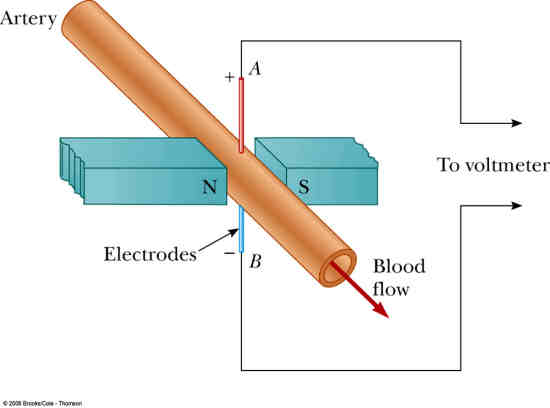
A. 0.625 m/s
B. 1.33 m/s
C. 0.750 m/s
D. 4.87 m/s
Answer
D. 0.444 V

A. 3.00 N
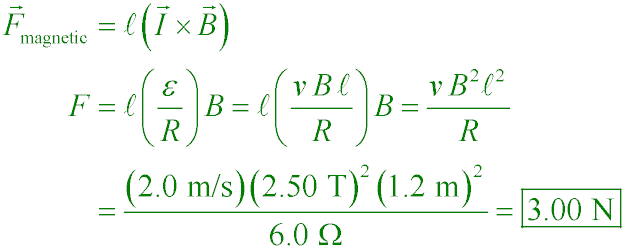
C. 6.00 W

A. 145 µA
This is a tough problem because there are two current loops,
and each sliding rail acts like a battery (a source of emf). So there's no way to avoid using
Kirchhoff's laws:
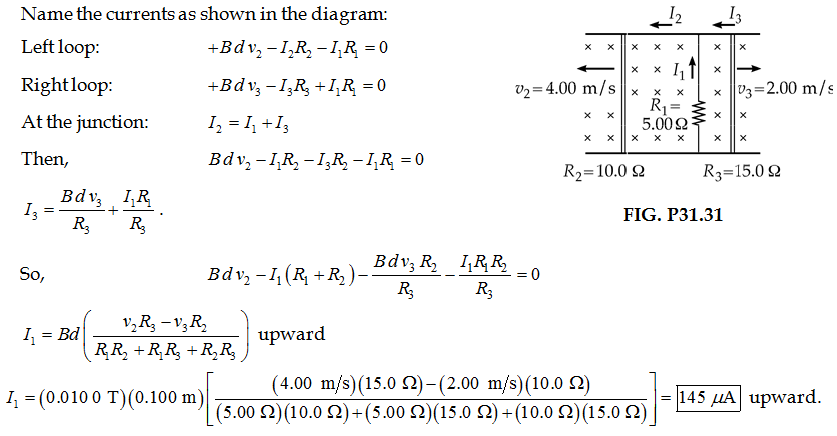
B. 1.33 m/s

